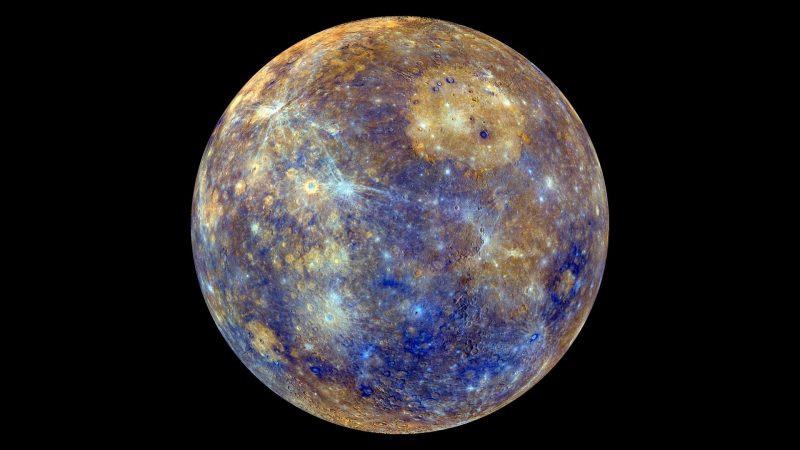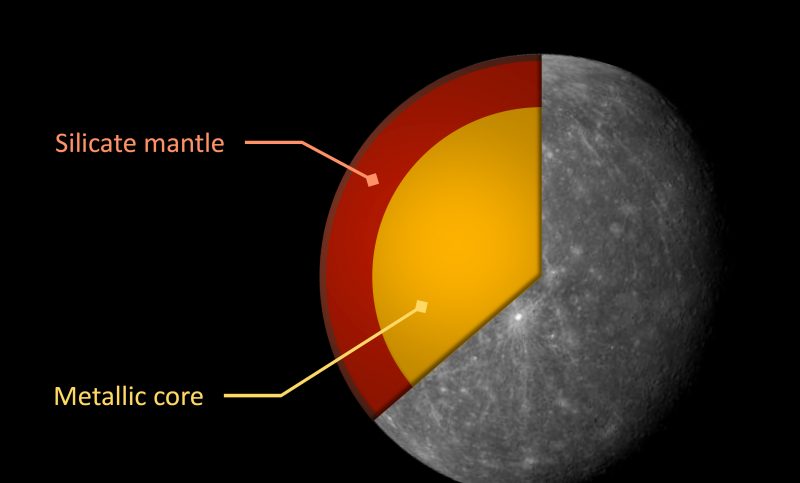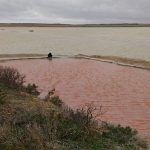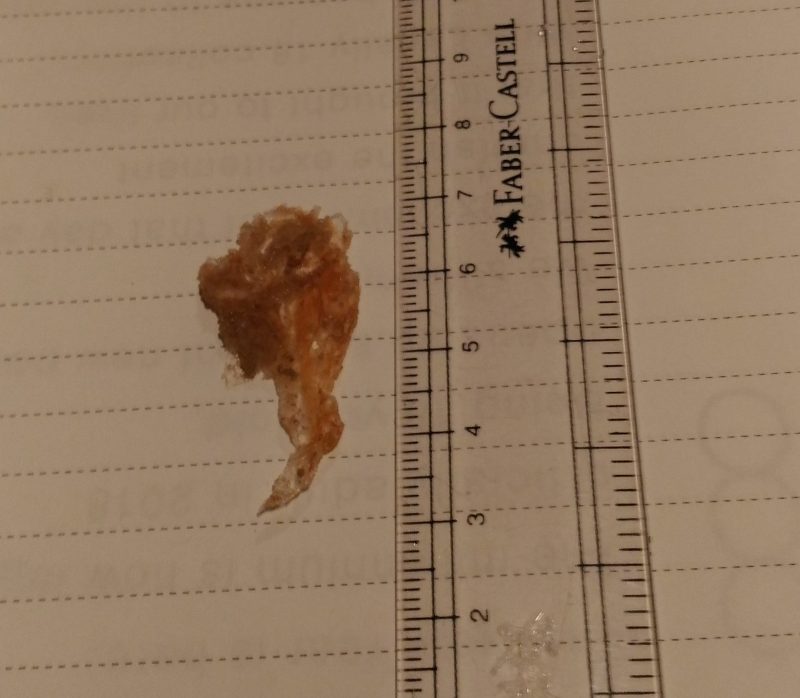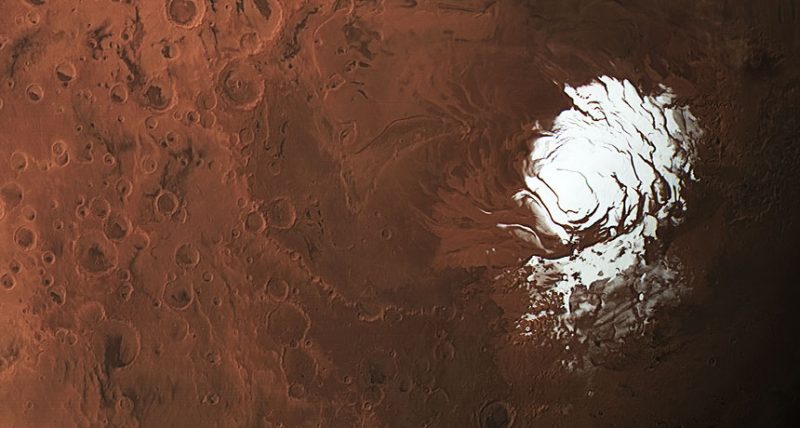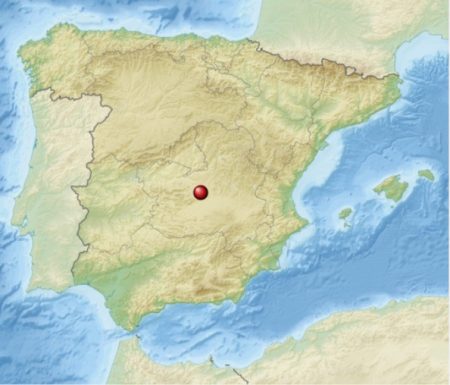In this warming world, some parts of the planet are warming much faster than others. The warming is causing large ice bodies to start to melt and move rapidly, in some cases sliding into the ocean.
This movement is the topic of a very new scientific study that was just published in the journal Earth and Planetary Science Letters. The Arctic is warming much faster than other parts of the planet and the ice there is showing the signs of rapid warming. This fact has serious consequences. First, melting ice can cause sea levels to rise and inundate coastal areas – it also makes storms like hurricanes and typhoons more destructive. Melting ice also causes a feedback loop, which can cause more future warming and then more ice loss.
It should be noted that there are different types of ice. Some ice floats on water and is called sea ice. When it melts, the ocean water level hardly budges because the ice is already in the sea displacing liquid water. But, sea ice is really important for this feedback loop I mentioned above.
Other ice is on land and may be a large ice sheet or a smaller glacier. These ice bodies sit atop the land and “rest” there. In some cases, they extend out off the land and into the ocean where they partly float on liquid water. When this land ice melts, the liquid flows into the oceans and can cause significant ocean level rising.
So, the importance of ice depends on what type it is, where it is located, and how fast it is melting. And this brings us to the new paper.
The researchers looked at a type of high latitude glacier in their study. These glaciers hold enough water to cause about 1 foot (about a third of a meter) in sea level rise. Typically, they exist in cold and dry areas, where snowfall is limited.
How do glaciers move? Well really by either sliding over the underlying bedrock or surface that they sit on, or by deforming and stretching under their weight. The colder glaciers tend to move by the deforming and stretching process. Glaciers that have wetter and more temperate regions involve more sliding. But regardless of how they move, these glaciers, particularly the glaciers that have both cold and temperate parts, experience surges in their motion. These surges are short duration times where the glacier moves a lot. During a surge, ice is redistributed from one part of the glacier to another region.
The authors in this study observed such a glacier surge. It happened at an outlet glacier that is mainly of the “cold” type in Russia. At the Vavilov Ice Cap on October Revolution Island, the authors find it “is undergoing extraordinary acceleration and thinning but displays no previous evidence of surging.” The authors write,
the 300-600 meter thick 1820 square kilometer Vavilov Ice Cap is frozen to its bed over the majority of its area, apart from a region along its western margin where basal sliding is potentially important for faster flow.
In 2010 the ice in the region began to accelerate and the next year, crevasses were observed that matched the patterns of ice acceleration. The researchers were able to watch this surge in ice motion in real-time using satellite images. They could track the motion and show the incredible speed of flow.
What caused the rapid motion? This is an important question because if the motion is caused by human warming, we can expect the behavior to be repeated elsewhere as temperatures rise. Importantly both air and ocean-water temperatures could be a factor. One potential cause is surface meltwater. The top of the ice can melt, and liquid water then can flow downwards, into the ice through cracks and holes. This flowing water can precondition the ice for rapid motion.
This fact may be a contributing cause to the motion. Basically, the melted water lubricated the ice/ground interface causing more sliding and more friction. The friction caused some of the bottom ice to melt and released more liquid water, and a cycle had begun.
The researchers also took measurements of elevation to better understand areas where ice was becoming thicker or thinner. In addition, they studied the forces that exist within the ice itself to help elucidate the cause of the increased speed. Obviously, this is an evolving area of study and all of the questions have not yet been answered. However, I was impressed when I read that even though these types of surges are becoming more common, what the researchers observed in Russia was still unique. They describe the rate of ice loss at Vavilov as “extreme.” The authors also point out,
from Skeptical Science https://ift.tt/2y0iirQ
In this warming world, some parts of the planet are warming much faster than others. The warming is causing large ice bodies to start to melt and move rapidly, in some cases sliding into the ocean.
This movement is the topic of a very new scientific study that was just published in the journal Earth and Planetary Science Letters. The Arctic is warming much faster than other parts of the planet and the ice there is showing the signs of rapid warming. This fact has serious consequences. First, melting ice can cause sea levels to rise and inundate coastal areas – it also makes storms like hurricanes and typhoons more destructive. Melting ice also causes a feedback loop, which can cause more future warming and then more ice loss.
It should be noted that there are different types of ice. Some ice floats on water and is called sea ice. When it melts, the ocean water level hardly budges because the ice is already in the sea displacing liquid water. But, sea ice is really important for this feedback loop I mentioned above.
Other ice is on land and may be a large ice sheet or a smaller glacier. These ice bodies sit atop the land and “rest” there. In some cases, they extend out off the land and into the ocean where they partly float on liquid water. When this land ice melts, the liquid flows into the oceans and can cause significant ocean level rising.
So, the importance of ice depends on what type it is, where it is located, and how fast it is melting. And this brings us to the new paper.
The researchers looked at a type of high latitude glacier in their study. These glaciers hold enough water to cause about 1 foot (about a third of a meter) in sea level rise. Typically, they exist in cold and dry areas, where snowfall is limited.
How do glaciers move? Well really by either sliding over the underlying bedrock or surface that they sit on, or by deforming and stretching under their weight. The colder glaciers tend to move by the deforming and stretching process. Glaciers that have wetter and more temperate regions involve more sliding. But regardless of how they move, these glaciers, particularly the glaciers that have both cold and temperate parts, experience surges in their motion. These surges are short duration times where the glacier moves a lot. During a surge, ice is redistributed from one part of the glacier to another region.
The authors in this study observed such a glacier surge. It happened at an outlet glacier that is mainly of the “cold” type in Russia. At the Vavilov Ice Cap on October Revolution Island, the authors find it “is undergoing extraordinary acceleration and thinning but displays no previous evidence of surging.” The authors write,
the 300-600 meter thick 1820 square kilometer Vavilov Ice Cap is frozen to its bed over the majority of its area, apart from a region along its western margin where basal sliding is potentially important for faster flow.
In 2010 the ice in the region began to accelerate and the next year, crevasses were observed that matched the patterns of ice acceleration. The researchers were able to watch this surge in ice motion in real-time using satellite images. They could track the motion and show the incredible speed of flow.
What caused the rapid motion? This is an important question because if the motion is caused by human warming, we can expect the behavior to be repeated elsewhere as temperatures rise. Importantly both air and ocean-water temperatures could be a factor. One potential cause is surface meltwater. The top of the ice can melt, and liquid water then can flow downwards, into the ice through cracks and holes. This flowing water can precondition the ice for rapid motion.
This fact may be a contributing cause to the motion. Basically, the melted water lubricated the ice/ground interface causing more sliding and more friction. The friction caused some of the bottom ice to melt and released more liquid water, and a cycle had begun.
The researchers also took measurements of elevation to better understand areas where ice was becoming thicker or thinner. In addition, they studied the forces that exist within the ice itself to help elucidate the cause of the increased speed. Obviously, this is an evolving area of study and all of the questions have not yet been answered. However, I was impressed when I read that even though these types of surges are becoming more common, what the researchers observed in Russia was still unique. They describe the rate of ice loss at Vavilov as “extreme.” The authors also point out,
from Skeptical Science https://ift.tt/2y0iirQ



